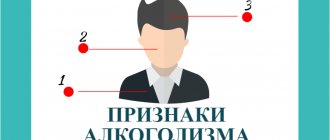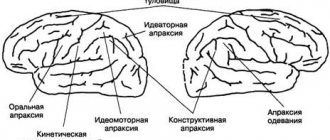In neurology, there are many hereditary diseases that manifest themselves as motor disorders. A striking representative of such a disorder is Huntington's disease, or, as it is sometimes called in translated literature, Huntington's disease.
This disease is “major” from the point of view that it heads a whole family of extrapyramidal hyperkinesis, occurring with signs of chorea, chorea. What is Huntington's chorea? Several definitions can be found. Let's try to “construct” the most complete answer from them.
What it is?
Huntington's chorea (Huntington's disease or syndrome, erroneously - chorea of Kensington, Harrington, Lempington, Lampington) is a genetic disease of the nervous system associated with a violation of the code on the fourth chromosome.
The changes lead to the appearance of pathological protein compounds in nerve cells, which cause metabolic disorders and irreversible changes in the brain (death of neurons responsible for muscle tone and coordination of involuntary movements).
The disease was first described by physician George Huntington in 1872, after whom it was named.
Pathogenesis
As for the pathogenesis of Huntington's chorea, there are manifestations of the disease at the molecular level - this topic has not yet been sufficiently studied.
It is only known that Huntington's disease develops as a result of an increase in trinucleotide repeats - cytosine-adenine-guanine in the first exon of the gene.
When expanded, the polyglutamine region of the huntingtin protein, changing its information, connects with other proteins. In this case, they stick together, as a result of which protein-protein interactions are disrupted. All this leads to apoptosis (death) of cells.
Brain atrophy occurs , control over movements and muscle tone by the black substance responsible for these functions is lost. The basal ganglia, which control movement and behavior, are also affected.
Causes
The exact causes and risk factors for the disease are not fully understood. The type of inheritance is autosomal dominant with some features:
- In a couple where there is at least one patient, the risk of having a child with Gettington's chorea is 50%, with men getting sick more often;
- If this genetic pathology is observed in the father, the progression of the disease in the child is faster.
Accordingly, the risk group for developing the disease includes people who have at least one sick parent.
Disease prevention
If a person has a family history of chorea, then it becomes necessary to conduct a genetic analysis for the presence of a defective gene. If one is detected, then the carrier is contraindicated to have children in order to prevent their disease.
Because even if the heir of a sick parent does not suffer from manifestations of this disease, the risk of its development in the unborn child is 25%.
It is not possible to prevent the disease, since it is determined at the genetic level.
From all of the above, we can conclude that the main way to combat Huntington’s disease is to early identify signs of the disease and promptly seek help from a doctor.
And the only way to prevent the development of chorea in your family is to give up the idea of having your own children if you have relatives in your family who suffer from this disease.
Classification
Based on the clinical manifestations of the disease, the following forms are distinguished:
- (classical) chorea. It develops most often after 40 years of age and is characterized by excessive movements with decreased muscle tone and low manifestation of mental symptoms. The course of the disease is slow, and sometimes it appears so late that symptoms are not detected until the person’s death.
- Juvenile form, or Westphalian variant. It is transmitted through the paternal line and manifests itself earlier, at 10-20 years of life; the clinical picture is dominated by a decrease in muscle tone, and hyperkinesis is less pronounced. It proceeds faster and has an unfavorable course with early death.
There is a psychological form of the disease, which is expressed by dementia and other mental changes. Hyperkinesis in this case is weakly expressed.
Symptoms
The first symptoms of the disease appear after 30 years of age (early onset is much less common).
Signs of Huntington's chorea include:
- Restlessness, fussiness and strange, frequently repeated movements (manifest in the first stages of the disease and are usually not regarded as pathology).
- Involuntary facial expressions, grimacing: clicking the tongue, smacking, opening the mouth, etc.
- A swaying gait accompanied by dancing movements and twitching movements.
- Disorders of motor activity of the eyes, development of nystagmus (rhythmic involuntary eye movements).
- Hyperkinesis, or uncontrolled movements (sudden swings of the limbs, jerking of the neck), which may disappear during sleep, but intensify during stressful situations.
- Slow speech with unnecessary sounds.
- Intellectual disorders: the patient ceases to recognize loved ones, he experiences memory impairment and dementia.
- Decreased muscle tone.
- Loss of ability to eat and care for oneself.
- Mental disorders: apathy, irritability, panic, delusional ideas, sometimes hypersexuality and alcoholism.
In the initial stages, a person can suppress the manifestations of the disease through willpower, but subsequently control weakens, and the steady progression of the pathology leads to disability.
The last stage is characterized by inappropriate behavior of patients: they do not navigate the environment, become absolutely helpless and require constant care.
In addition, they exhibit unmotivated aggression, hallucinations and suicidal thoughts.
What do choreic hyperkinesis look like?
Huntington's chorea - what is it and how does the disease manifest? A person exhibits:
- grimaces;
- increased gestures;
- hand tremors;
- when walking: waving arms, nodding head, staggering;
- difficulty speaking due to smacking, grimacing;
- any motor act is accompanied by a mass of additional small movements.
At first, patients can cope with these movements by force of will. However, hyperkinesis gradually intensifies, becomes more pronounced, and it becomes impossible to control them.
Difficulties with self-care may arise, since many unnecessary movements do not allow the patient to cope on his own, for example, with dressing.
The functions of other organs, the sensitivity of muscles and skin are not impaired, and the muscles responsible for the movements of the eyeballs do not develop hyperkinesis.
Mental disorders most often appear in the later stages of the disease, when hyperkinesis is quite pronounced. Less often - simultaneously with the development of motor disorders.
Diagnostics
At the first stage, the doctor collects the patient’s history and complaints, assesses involuntary movements and the patient’s mental state.
To confirm the diagnosis of Huntington's chorea, CT and MRI are performed to identify abnormalities in the structures of the brain, as well as a genetic blood test to determine characteristic defects.
Differential diagnosis is carried out with other types of chorea (Sydenham's chorea), Wilson's disease and Parkinson's disease, tumors and infectious diseases of the brain.
Diagnostic price
| Name of honey services | Average cost, rub. |
| Initial consultation with a neurologist | 1998 |
| Repeated consultation with a neurologist | 1514 |
| MRI of the brain | 5811 |
| CT scan of the brain | 4584 |
| MSCT of the brain | 6018 |
| NMDA receptor antibody test | 5801 |
How to treat?
Today, Huntington's chorea is considered an incurable disease, so treatment is aimed at improving the patient's condition.
To combat the disease, medications are used that are aimed at reducing the main symptoms and manifestations of the pathology.
- "Tetrabenazine" ("Tetmodis") . A drug that was created to reduce the intensity of involuntary movements in patients with Huntington's chorea.
- Neuroleptics (Haloperidol, Moditen, Sonapax) are used to reduce the mental manifestations of the disease. Modern doctors recommend new generation antipsychotics (Olanzapine, Risperidone) to patients due to the minimal number of side effects.
- Antidepressants and anxiolytics . For Huntington's chorea, tricyclic antidepressants and selective inhibitors are used predominantly - Amitriptyline, Fluoxetine. They ease a person’s psychological state, reduce anxiety, irritability and other manifestations of depression.
- Valproic acid preparations. Sodium valproate and other similar drugs are prescribed for seizures.
- Antiparkinsonian drugs. In the later stages of the disease and when muscle tone increases, patients are recommended to take Levodopa and other medications prescribed for Parkinson's disease.
To reduce psychological symptoms and prolong working capacity, patients are recommended to attend training on the development of thinking and engage in some kind of intellectual activity.
Previously, there were attempts to treat Huntington's chorea surgically through so-called stereotactic operations (the introduction of electrodes or microinstruments into certain areas of the brain), but due to the lack of effect, such methods are no longer used.
The only way out for patients is long-term use of medications that can improve the length and quality of life.
Neurochemical changes
During a neurochemical study of the brain in patients suffering from Huntington's chorea, it was found that the concentration of GABA (aminobutyric acid, which is responsible for neurotransmitter and metabolic processes in the brain) in the striatum is significantly reduced.
The patients showed a decrease in choline acetyltransferase activity in the striatum, which may indicate a loss of cholinergic neurons. Although they are mostly preserved. The same applies to substance P, which is located in the middle styloid neurons of the striatum.
At the same time, the level of glutamate during chorea increases, as does the synthesis of cholinic acid.
You can find out what happens to the body with amyotrophic lateral sclerosis from our material. Taking the drug Carbamazepine is possible only when the instructions for use of the drug and reviews have been studied in detail.
Treatment abroad
Reviews about the treatment of neurological diseases in foreign clinics are much better than in Russia, so many patients with Huntington's chorea choose medical institutions in Europe, Asia and the USA.
The list of countries where diagnosis and treatment of the disease is carried out includes:
- Israel;
- Germany;
- Switzerland;
- Austria;
- Malaysia.
The cost of treatment is determined individually for each specific case (usually it starts from 2 thousand euros), but it should be noted that the therapy will cost the most for those who will be treated in Germany, Austria and Switzerland.
Israeli clinics receive assistance from the state, so prices there are much lower.
Forecasts and statistics
According to medical statistics, Huntington's chorea is considered a rare disease - from 2 to 7 cases per 100 thousand population, and it is most widespread in the Scandinavian countries.
There are no preventive measures to prevent the development of the disease (since Huntington's chorea tends to get worse from generation to generation, people with this diagnosis are not recommended to have children).
The prognosis for life is unfavorable - death occurs 10-13 years after the onset of the first symptoms at the age of 45-55 years from complications of the disease (pneumonia, cardiac disorders).
About 20% of patients die due to suicide.
Today in Western countries, research is being conducted on the use of stem cells and the creation of drugs that can block the synthesis of pathological proteins, which will give patients diagnosed with Huntington's chorea hope for recovery.










